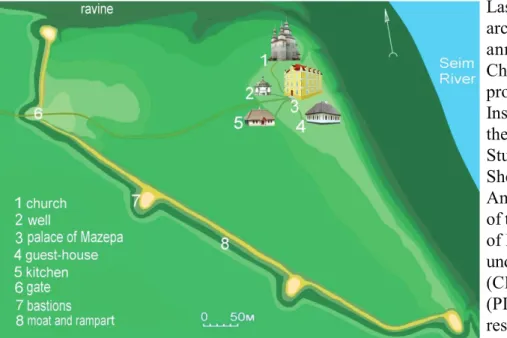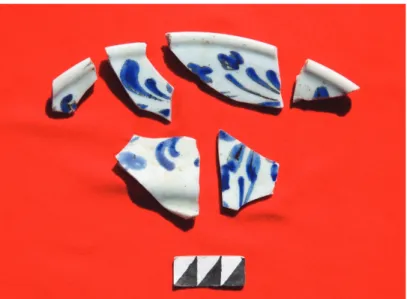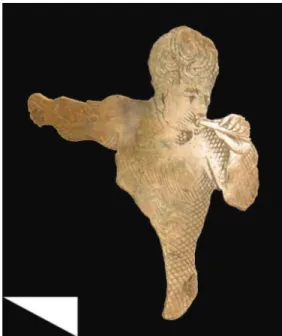Canadio-Byzantina 24 (January 2013)
8
REPORTS
Excavations in Baturyn in 2012
Last summer, the Canada-Ukraine archaeological expedition continued its annual excavations in Baturyn, Chernihiv province, Ukraine. The project is sponsored by the Canadian Institute of Ukrainian Studies (CIUS), the Pontifical Institute of Mediaeval Studies (PIMS) in Toronto, and the Shevchenko Scientific Society of America. Prof. Zenon Kohut, Director of the Kowalsky Program for the Study of Eastern Ukraine at CIUS, heads this undertaking. Dr. Volodymyr Mezentsev (CIUS) and Prof. Martin Dimnik (PIMS) have participated in this research and the dissemination of its results. The Baturyn archaeological expedition is based at the University of Chernihiv in Ukraine. About 60 students of history and scholars from universities and museums in Chernihiv and Hlukhiv as well as the Kyiv Mohyla Academy took part in the 2012 excavations.
Baturyn, a capital of the Cossack Hetman state, prospered during the illustrious reign of Hetman Ivan Mazepa (1687-1709). At that time, it was a major centre of Ukrainian baroque architecture and art competing with Kyiv and Chernihiv, the oldest and most important cities in central Ukraine. In 1708, Mazepa rebelled against the Russian tsar seeking independence for the Cossack state. His revolt failed and during the hostilities Muscovite forces razed Baturyn, the rebel base. In August the archaeological team resumed investigating the remnants of Mazepa’s palatial residence erected before 1700 and located in Honcharivka, a suburb of Baturyn. The residence, built and embellished primarily in the Central European baroque style, was made of brick, had a basement, three floors, and a mansard. On the basis of the excavations of its foundations and a drawing of the palace from 1744 that has been preserved at the National Museum in Stockholm, the researchers have determined its size (14.5 m. by 20 m.), its ground plan, and its architectural and decorative designs. They also created the hypothetical computer reconstructions of the building’s exterior along with the other known structures of the hetman’s court.
In 2012, a broken figured ceramic base of a semi column from the facade and Fig. 1. Schematic plan of Mazepa's fortified villa in the Baturyn
suburb of Honcharivka (before 1700) by Yu. Sytyi and V. Mezentsev. Computer graphic by S. Dmytriienko.
Fig. 2. Fragment of a stone Composite capital with a relief volute from a semi column of Mazepa’s palace. Excavations at Honcharivka in 2012. All photos by V. Mezentsev.
Canadio-Byzantina 24 (January 2013)
9 a carved stone Composite capital with a relief volute were discovered in the palace debris. These finds correspond with the depiction of the Composite order elements in the original drawing of the palace and thus corroborate the accuracy of the graphic reconstructions of the structure and specifically the ornamental details of its elevations.Mazepa commissioned the erection of a court church near his residence. It survived the destruction of Baturyn in 1708 but was demolished in the 1750s. The latest excavations of its site have revealed that the edifice measured 10.5 m. by 9 m. According to Ukrainian folk building practices the walls were constructed of squared logs and the floor was made with planks. In keeping with the directives of the Byzantine Orthodox canon the single altar apse had an eastern orientation. The archaeologists continued exploring the remnants of several wooden structures
within the Mazepa household that served as living quarters and service buildings. They partially unearthed a sizeable dwelling that may have belonged either to a well-to-do educated Cossack officer or to an official working at the chancellery, archives, or library in the hetman’s palace. Included among the finds were the following: a rare chess piece pawn chiselled from bone, three expensive women’s ornaments made of silver, rock crystal, coloured glass, a relief copper pendant, two bronze clasps and three figured appliqués for adorning military leather belts, five lead musket bullets, four iron arrowheads, fragmented glassware and a bronze tureen of the 17th-18th–century produced locally. The finds also included the contemporaneous 11 silver Polish and Russian coins, fragments of imported Dutch porcelain tobacco pipes and tableware, as well as fine plates manufactured from milky glass and painted with blue plant patterns. The plates may have been brought to Baturyn from Turkey or the Crimean Khanate. Fig. 4. Bronze belt clasps and appliqués, a decorative hinge pin, and a circular copper pendant. Excavations at Honcharivka in 2012. Fig. 3. Bone chess
piece discovered at the excavated wooden dwelling at the
hetman’s court in 2012.
Fig. 5. Broken milky glass plates painted with floral ornaments, unearthed at the hetman’s household in 2012
Canadio-Byzantina 24 (January 2013)
10
Of particular interest are three fragments of what was most likely the broken bronze decorative binding/casing of a costly book of Western origin. One of these fragments features
the engraved upper part of a nude man playing a trumpet. It was professionally executed in a realistic Classical style. Probably the representation is that of a pagan mythological figure and the work of Italian early modern secular art.
Archaeological finds such as these provide valuable insights into the wealth, intellectual pursuits, and artistic appreciation of the Cossack elite at Mazepa’s court, as well as the penetration of European cultural influences to it. These also show the stimulating trade relations of the hetman capital with the West, Russia, and the Ottoman Empire. The Canada-Ukraine expedition intends to renew its field research in Baturyn next summer.
Martin Dimnik and Volodymyr Mezentsev
Report on Byzantine Studies Conference XXXIII, Brookline, Massachusetts, November 2012 The 38th Annual Byzantine Studies Conference was held at the Hellenic College and Holy Cross Greek Orthodox School of Theology in Brookline, Massachusetts, from 2 to 4 November 2012. This year’s program featured papers covering a broad range of interdisciplinary Byzantine topics by scholars from North America and abroad. Despite the devastation and travel disruptions caused by Hurricane Sandy, the turnout was impressive and the transatlantic scholarly presence was particularly strong with scholars traveling from such great distances as Austria, Denmark, France, Greece, Israel, Italy, UK, and Sweden.
The conference program featured archaeological and art historical sessions ranging in topic from Settlement Archaeology to Food and Water in Byzantium to Iconographic Complexities; literary sessions attended to such themes as Textual Practices and Liminal Characters; and interdisciplinary sessions covered such topics as Church Fathers, Power in Early Byzantium, Byzantine Women, and Egypt, with sessions on cultural exchange featuring prominently, as evidenced by panels on Byzantium and Italy and Crusader Worlds.
For the first time this year, the program committee accepted submissions of complete panel proposals. The resulting sessions included: Jewish and Christian Hymnography; Translation and Scholarship: the Dumbarton Oaks Medieval Library, Byzantine Greek Series; and Hybrids and Mixtures: Genre-crossing in Byzantine Literature. Moreover a round table discussion of ‘Exhibiting Byzantium Today’ featured the curators of the collections of the Metropolitan Museum of Art, the Art Institute of Chicago, the Menil Collection, Holy Cross Greek Orthodox School of Theology, and Dumbarton Oaks.
Fig. 6. Fragment of a bronze book casing with an engraved male figure, found at the wooden residence in Mazepa’s court in 2012


